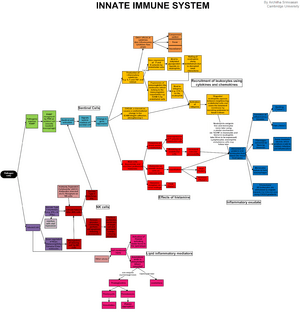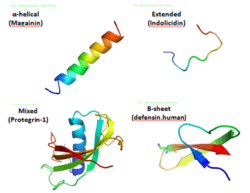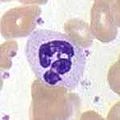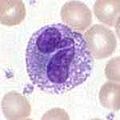Innate immune system facts for kids
The innate immune system is like your body's first line of defense against invaders. "Innate" means it's natural or inborn, something you're born with. This system helps protect you from infections caused by pathogens, which are tiny germs like bacteria and viruses.
It works super fast to recognize and fight off these germs. The cool thing about the innate immune system is that it responds in the same way to all the different germs it finds. It's a general defense system, not a specific one.
Unlike the adaptive immune system, which learns and remembers specific germs, the innate system doesn't give you long-lasting protection against a particular infection. But it gives you immediate defense! You can find this type of immune system in all plants and animals. It's a very old defense strategy in terms of evolution.
For animals with a backbone, like humans, the innate immune system does a few important things:
- It acts as a physical and chemical shield against germs.
- It starts a process called the complement cascade to find bacteria and clean up dead cells.
- Special white blood cells find and remove foreign stuff in your body.
- It helps kick-start the adaptive immune system when needed.
Contents
Your Body's First Shields
Your innate immune system has many physical barriers that stop germs from getting inside. The most obvious one is your skin. The outer layers of your skin are made of special cells called epithelial cells. These cells form a tough, waxy barrier that keeps most infectious germs out. Think of your skin as a strong castle wall protecting your body!
Old skin cells are always falling off, and this helps to remove any bacteria that might have stuck to your skin.
The skin's protective lining continues inside your body, like in your intestines and lungs. In these places, movements like peristalsis (muscle waves) or cilia (tiny hairs) help push out germs. Also, sticky mucus traps infectious agents. In your intestines, helpful gut flora (good bacteria) can stop bad bacteria. They do this by making toxic stuff or by competing for food and places to stick to cells.
Even your tears and saliva help! Their flushing action washes away germs, preventing infections in your eyes and mouth.
What is Inflammation?
Inflammation is one of the first ways your immune system reacts when germs or foreign stuff get past your body's barriers. It's a sign that your body is fighting back!
Inflammation starts when injured cells release special chemical signals. This process creates a physical barrier to stop the infection from spreading. It also helps damaged tissue heal after the germs are gone.
The chemicals made during inflammation attract special cells called phagocytes, especially neutrophils. These cells then help trigger other parts of your immune system to join the fight.
The Complement System
The complement system is like a team of special proteins in your blood. These proteins work together in a chain reaction to help your body fight germs. They are made in your liver.
This protein team helps in several ways:
- They call in more immune cells to the area of infection.
- They "tag" germs by coating their surface, making them easy targets for other immune cells to destroy.
- They can poke holes in the outer layer of infected cells, causing them to burst and die. This also kills the germs inside.
- They help clear out leftover bits of germs and antibodies after a fight.
Parts of this complement system can be found in many different animals, not just mammals. This includes plants, birds, fish, and even some invertebrates (animals without backbones).
How Invertebrates Fight Germs
Antimicrobial Peptides
Antimicrobial peptides (AMPs) are tiny protein pieces that are a key part of the innate immune response. You can find these special peptides in almost all living things. They are very strong natural antibiotics. They can kill many types of germs, including different kinds of bacteria, viruses, fungi, and even some cancerous cells.
For example, fish that live in the ocean have a lot of these antimicrobial compounds. Tests have shown that peptides from fish can work really well when used in food or animal feed.
Images for kids
-
A scanning electron microscope image of normal human blood. You can see red blood cells, white blood cells (like lymphocytes, a monocyte, a neutrophil), and tiny platelets.
See also
 In Spanish: Sistema inmunitario innato para niños
In Spanish: Sistema inmunitario innato para niños






